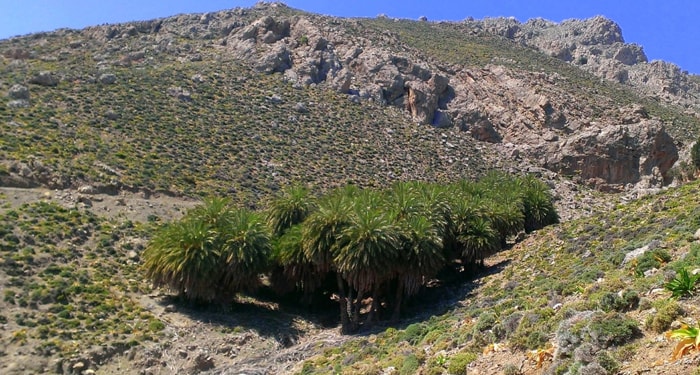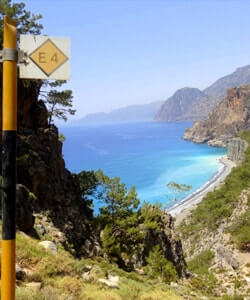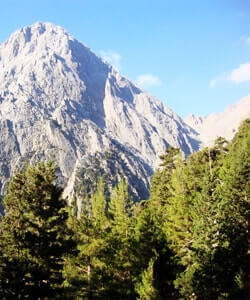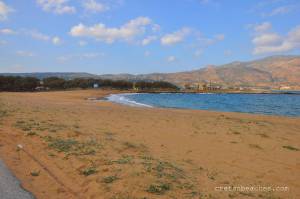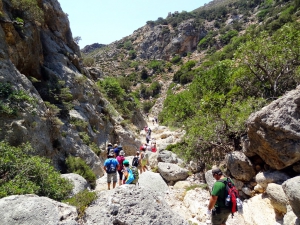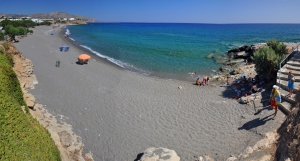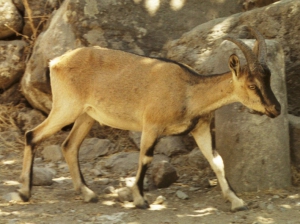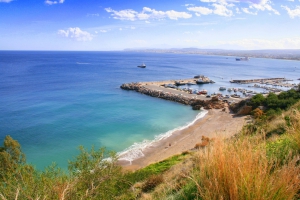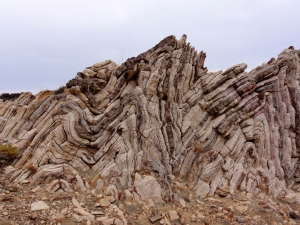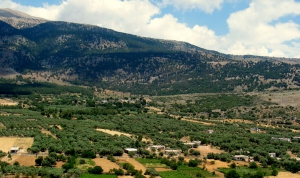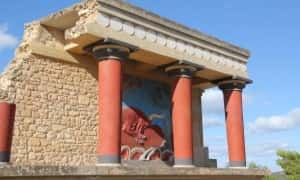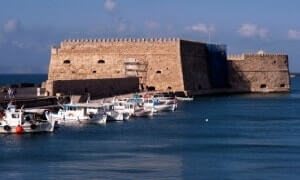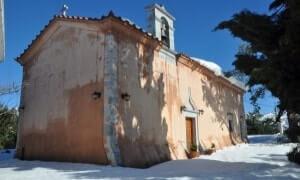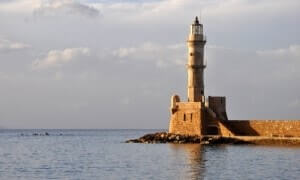The cave of Eileithyia is located 7km east of Heraklion and 1 km southeast of Amnissos. It is formed on the eastern sides of the valley of Karteros, next to the old road that lead to Episkopi from Amnisos. The entrance of the cave is near an old fig tree. The cave was discovered during the last century. The locals also call it “Neraidospilios”, meaning the Fairy Cave.
The beach starts from the church “Madonna of the Harbor”, near the port of Kissamos, and extends along a 2km shore with coves, up to Kaliviani. Vigglia has coarse sand and crystal clear waters. In some parts, the sand is interrupted by a few pebbles and rocks.
The small but impressive gorge of Anydri is located east of Paleochora. It starts from the village Anidri and after a snaky course, about 3km long, between high cliffs it concludes at the beautiful beach Gialiskari.
Kalamokanias is located 57km southeast of Agios Nikolaos and 22km east of Ierapetra, on the west side of Makrigialos settlement. It is located on the west side of the hill that rises behind the harbor area. It takes its name after the migratory bird stilt (Himantopus himantopus) that has red legs and body reminding of a miniature stork and stops in the local streams.
The proud Cretan wild goat (scient. Capra aegagrus creticus), also known as agrimi, wild goat, or Cretan Ibex is an endemic subspecies of wild goat, is the only species of ibex in Europe. According to the genetic characteristics, the wild goat was introduced in Crete from Asia and then came to contact with the ordinary goats on the island, while retaining many of the genetic characteristic of its Asian cousins.
Pantanassa is located 12km west of Heraklion and takes its name after the homonym monastery, dedicated to Virgin Mary. The beach is next to the port of Pantanassa, which was built a few years ago. Before the port, Pantanassa was a fantastic beach, hidden by a small pine forest and with crystal clear waters. Now, the port has “cut” the beach in half and Pantanasa has lost its old charm.
The folds of the rocks at position Apoplystra, between the village of St. Paul and the sandhills are remarkably colorful and have been proposed to be listed to the Natural Monuments of Greece.






